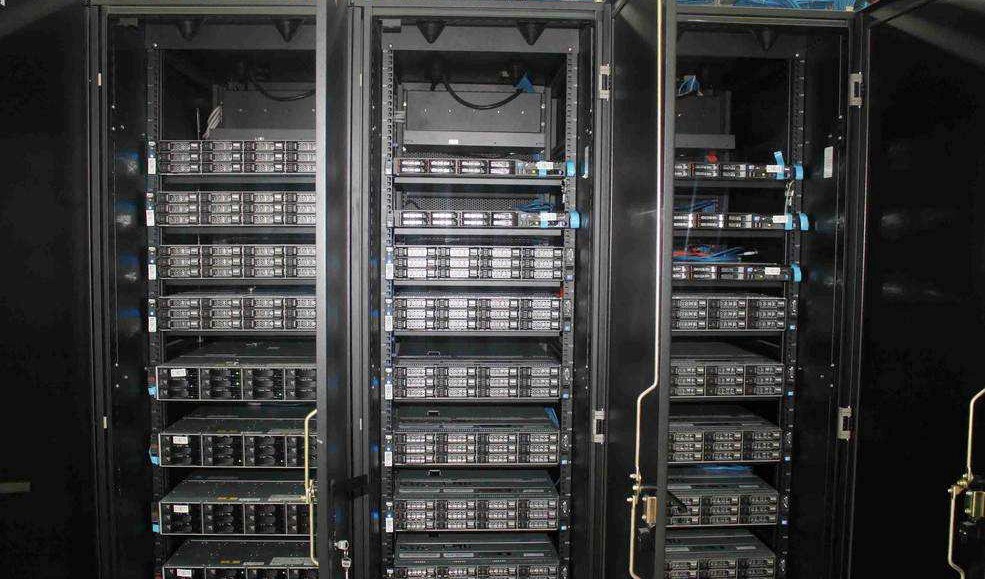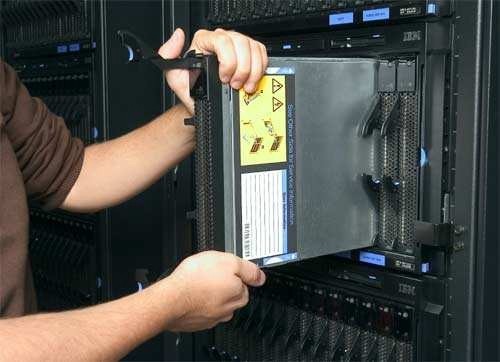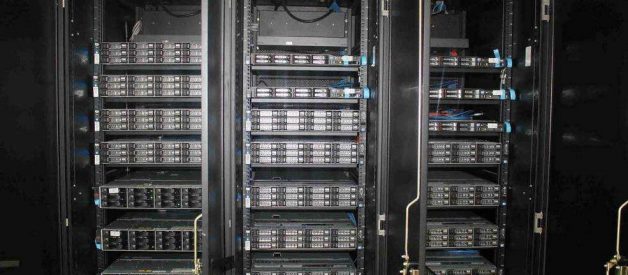Do you know the difference between blade and rack servers?
Actually, both of them are the network servers. The biggest difference is the installed way. A Rack Server is a standalone device installed in the cabinet, while several blade servers need to work with each other in one chassis.
In this article, we will introduce concepts of these two servers and difference between them.
What is a Rack Server?

The rack server looks like the switch. It includes 1U rack, 2U rack, 4U rack, etc. Usually, the 1U of rack-mounted servers provide the most space-saving, but poor performance and scalability, suitable for some relatively fixed field of business. The 4U servers provide higher performance, scalability, and generally support more than 4 high-performance processors and a large number of standard hot-swappable components. Its management is also very convenient. Those manufacturers usually provide the appropriate management and monitoring tools, which are suitable for the large traffic applications. However, larger servers, the space utilization is lower.
The rack server is installed inside a standard 19-inch rack. Most of this structure is a multifunctional server.
The most popular rack servers in 2019 are the HPE ProLiant DL380 Gen10 series servers and Dell PowerEdge R740 series servers. If you?re interested, you can click the link to check their price.
What is a Blade Server?

The blade server (HPE ProLiant BL460c Blade Servers are one of the most popular one.) is the server unit that can be plugged into the standard rack chassis. Each server unit is a system mainboard, like an independent server. In this mode, each mainboard runs its own system and serves different groups of users specified and is not associated with each other, so the performance of a single-chip motherboard is lower, compared to those rack-mounted servers.
However, administrators can use system software to aggregate these mainboards into a single server cluster. In cluster mode, all mainboards can be connected to provide a high-speed network environment while sharing resources and serving the same user base. As each ?blade? is hot-swappable, the system can easily be replaced and the maintenance time is minimized.
Difference between Blade and Rack Server
Let us compare blade server and rack server advantages.
1.Are they saving space?
The blade Server saves more space than the rack server.
For example, when dealing with 1024 nodes in high-density computing server environment, we need to deploy 24 racks to install those 1U rack servers. It doesn?t include the Ethernet switching hub.
However, if we use the blade server chassis which is plugged 8 blades, we only need to deploy 9 racks. In the meantime, it includes the Ethernet switching hub.
2.Are they easy to deploy cables or manage?
These Blade servers in the room have unified wiring network cabling and power lines. Each blade servers do not require engineers cabling.
The rack server, respectively, each server need network cabling and power cord wiring. If a 42U cabinet when installing multiple 1U servers, cables behind the cabinets are very much. It will seem very messy.
For the TCO needs, the blade servers are easier to manage, providing more processing power in smaller spaces, and less cost
3.What is their flexibility?
Most of the blade servers are less flexible than those rack servers.
For example, in high-performance database applications, the external RAID card of blade severs can?t be equipped with a disk array. In addition, if the user needs large-capacity memory database server, but do not want to build the cluster mode, the blade servers will also be powerless.
It?s because a rack server with 16 memory slots is readily available on the market. Most blade servers only support 4?8 memory slots. The blade server flexibility is relatively weak, even if there is a suitable product, the price is extremely high.
4.How about the cost of them?
People think that the full cost of the blade server, compared to the same vendor?s most expensive rack server, the cost is still a lot of savings.
However, in fact, if the user is doing ?gradually increase the blade in the chassis?, you will find that the rack server is more cost-effective, because most blades and related products are more expensive than their corresponding rack products. A typical blade chassis costs between $ 4,000 and $ 8,000 and a blade is more expensive than a 1U rack.
5.Can their functions be extended?
The benefits of 1U rack sever are it uses standard server design technology, standard ports, in order to work alone. It can?t be upgrade more functions but it can extend its functions through connecting Expansion cabinet.
When we increase the new blade server unit, we just plug the new one into the chassis. It?s over. Blade servers can plug into the expanded infrastructure. In addition, option modules inside the chassis allow us to add the ability to share functions once connected externally. Modular design of blade server technology has rapid expansion.
6.Are they easy to maintain?
When using rack servers, there are many messy cables, causing hidden problems but there is not any cable problem with the blade servers.
As the blade server units are hot-swappable, they are easy to troubleshooting. The rack servers are standalone devices so that it?s more difficult to troubleshooting.
Both of blade servers and rack servers can provide the useful functions for different needs.
The Rack server meets the needs of user applications, while the blade server integration is too dense, with standard, cooling has not been completely resolved. Furthermore, the blade server works with a large number of machines together to form a cluster for the user.
In short, the blade servers still can?t replace the rack servers.


